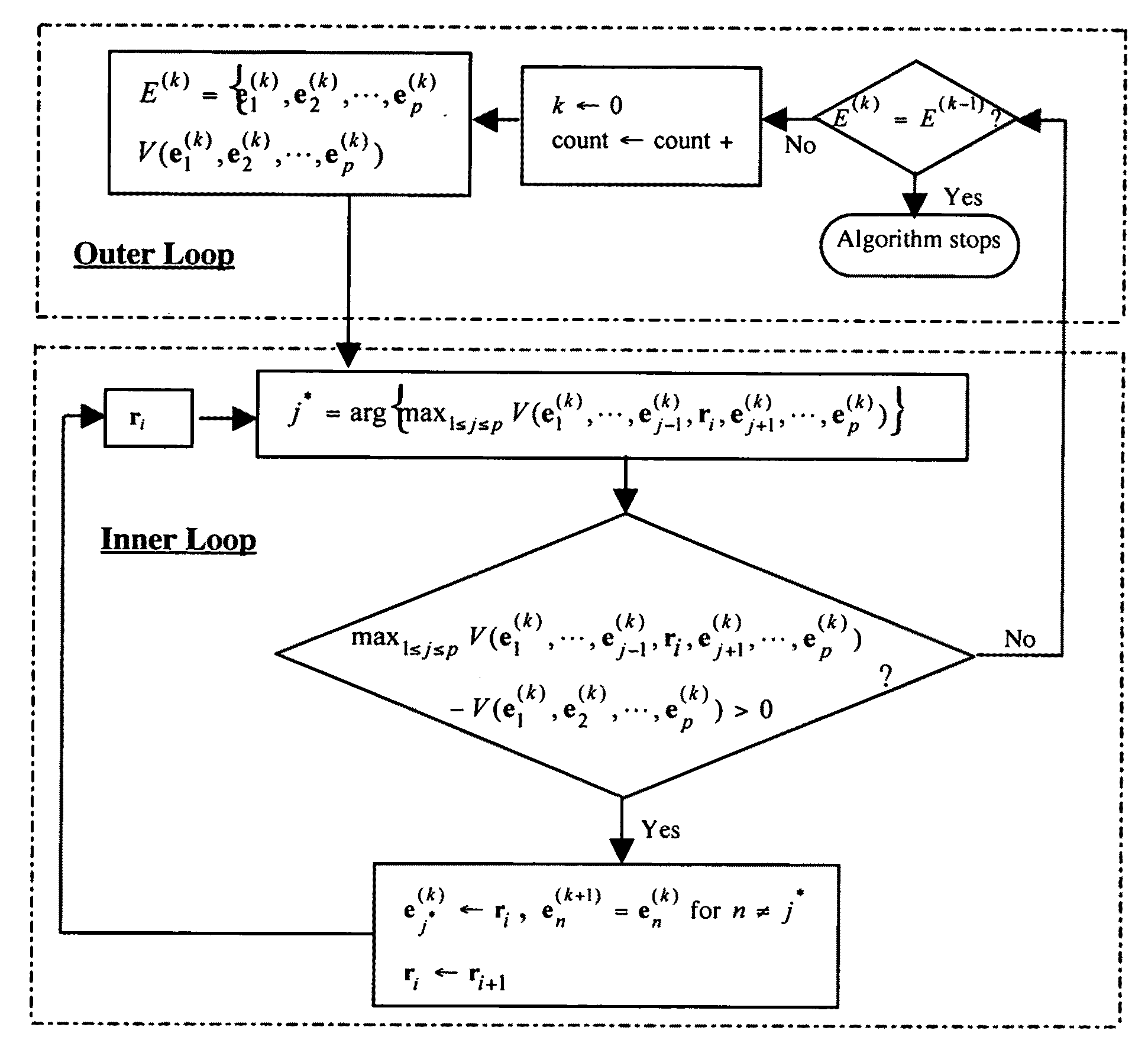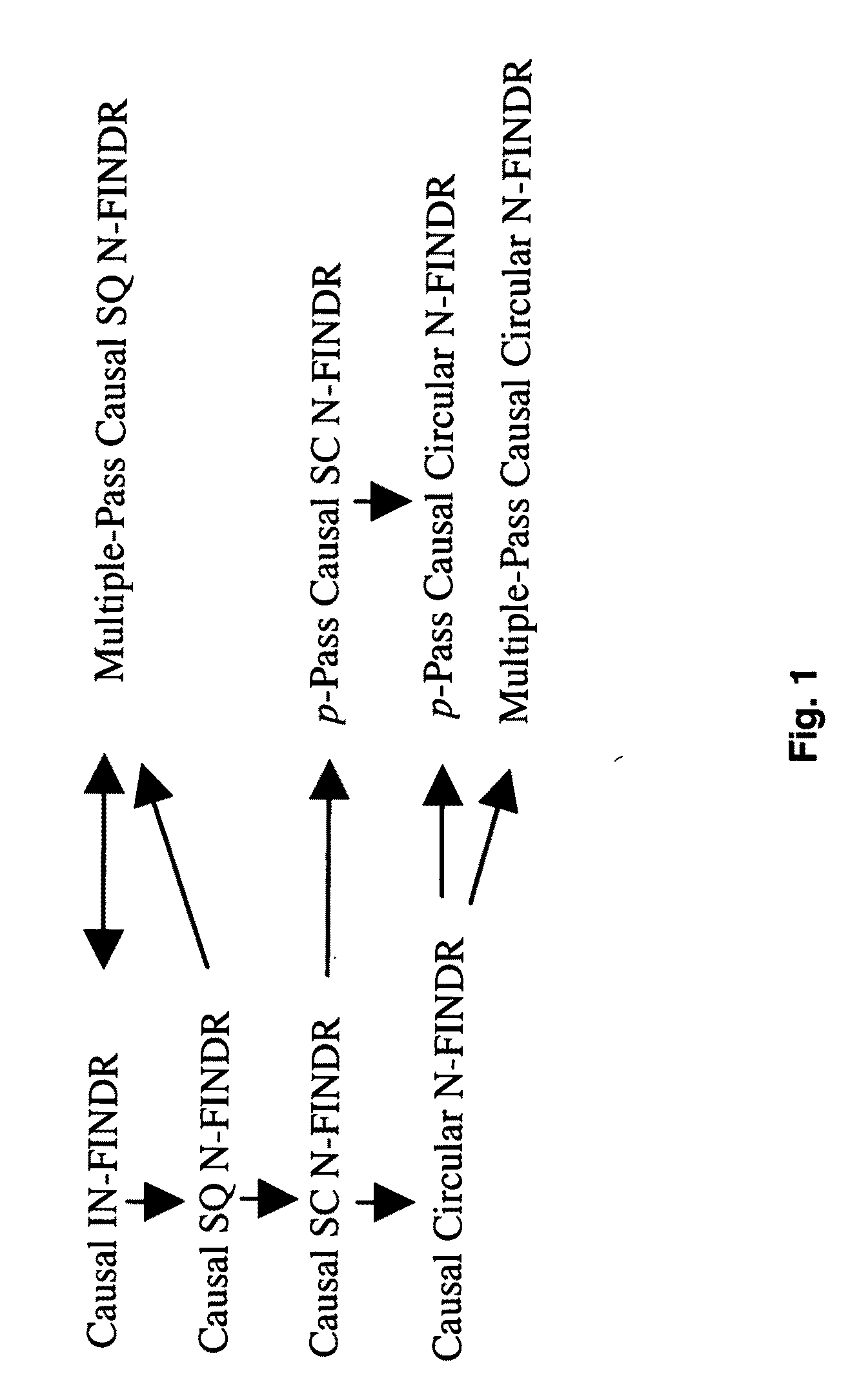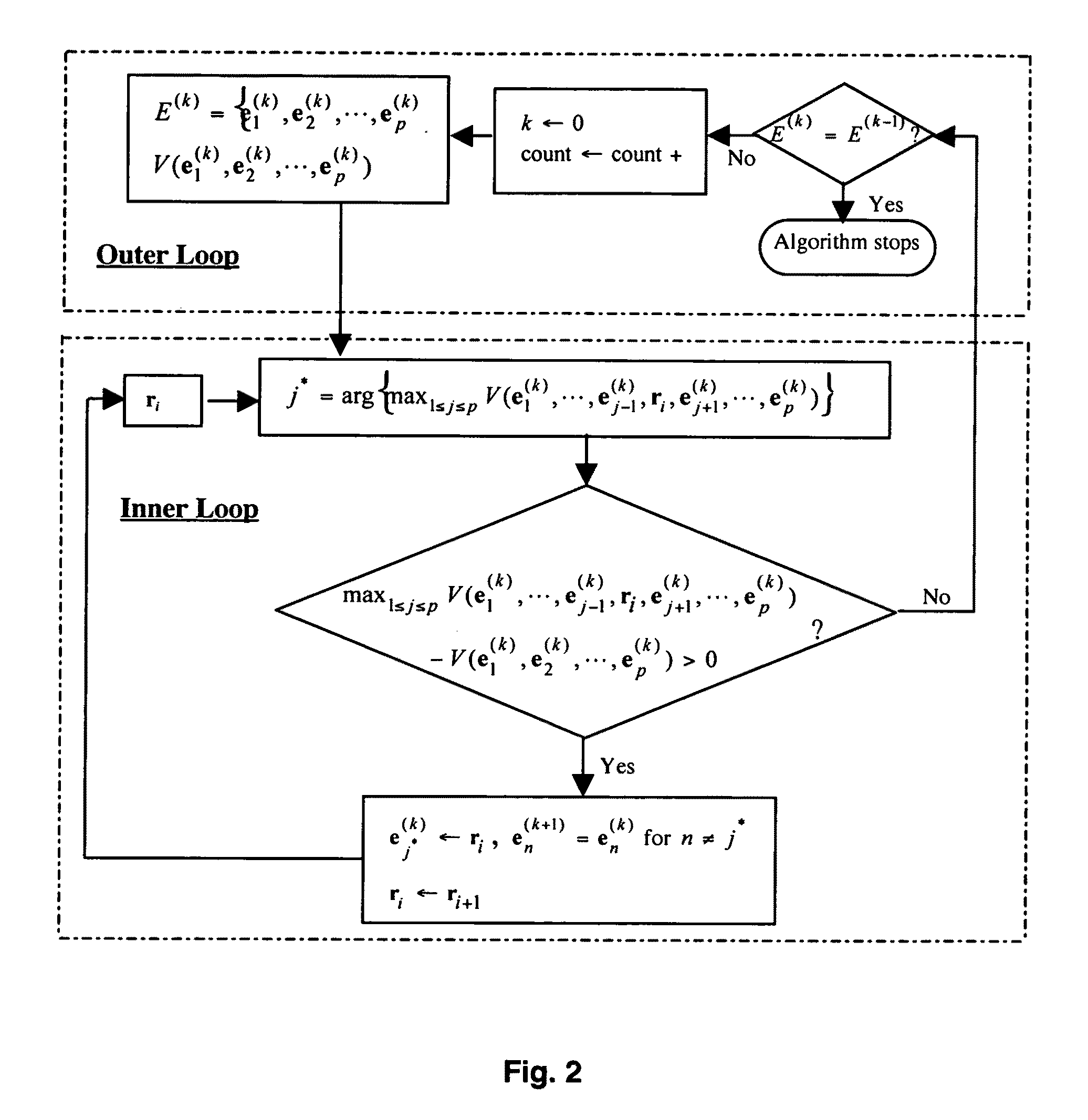Maximum simplex volume criterion-based endmember extraction algorithms
a volume criterion and extraction algorithm technology, applied in the field of hyperspectral remote sensing applications, can solve the problems of inability to implement real-time processing, inability to find the source, computational complexity, etc., and achieve the effect of reducing the top of data dimensionality
- Summary
- Abstract
- Description
- Claims
- Application Information
AI Technical Summary
Benefits of technology
Problems solved by technology
Method used
Image
Examples
example 1
Synthetic Imaging: SGA
[0175]Three Airborne Visible / InfraRed Imaging Spectrometer (AVIRIS) Cuprite data sets were used for experiments. One set is the reflectance laboratory data which is available on the USGS website. Five mineral spectra with 224 bands, Alunite (A), Buddingtonite (B), Calcite (C), Kaolinite (K) and Muscovite (M) are shown in FIG. 5A.
[0176]Two other data sets are obtained from the real AVIRIS Cuprite image data shown in FIG. 5B which is also available on the USGS website. The scene is a 224-band image with size of 350×350 pixels and was collected over the Cuprite mining site, Nevada, in 1997. It is well understood mineralogically. As a result, a total of 189 bands were used for experiments where bands 1-3, 105-115 and 150-170 have been removed prior to the analysis due to water absorption and low signal to noise ratio (SNR) in those bands. Although there are more than five minerals on the data set, the ground truth available for this region only provides the locatio...
example 2
Synthetic Imaging: Causal IN-FINDR, SQ-FINDR, SC N-FINDR & SGA
[0190]Simulation data is used with six scenarios for the real time implementation of IN-FINDR, SQ N-FINDR, SC N-FINDR, and SGA. Due to the complete knowledge of the simulation data, six endmembers were extracted on each scenario by the real time implementation of these algorithms and their performances are evaluated by the number of extracted panels. In the previous implementations of these algorithms, a data dimensionality reduction technique is required as a preprocessing step to reduce the computational complexity and to calculate the determinant of a matrix for simplex volume. However, it is necessary to run on the original image to implement these algorithms in a real time manner since most data dimensionality reduction techniques require the knowledge of the whole data set which is not a causal processing. Running on the original image demands calculations of determinant of a non-square matrix for simplex volume. Th...
example 3
Real Image Experiments
[0198]Real HYDICE and Cuprite data were used to make a performance comparison among these real time implemented N-FINDRs. They were running on the original image without any data dimensionality reduction. 9 endmembers in the HYDICE data and 22 endmembers in the Cuprite, estimated by the VD with PF=10−4, are extracted. Their performance can be compared by the number of extracted panels and materials in the HYDICE and Cuprite data.
HYDICE Data
[0199]The results of the real time implementation of N-FINDRs were shown in FIGS. 13A-13G, 14A-14I and 15A-15H. FIGS. 13A-13F show that the SQ N-FINDR can extract three panels at the first pass and the following passes do not improve the performance much. In the case of the p-pass SC N-FINDR (FIGS. 14A-14I) and (p−1)-pass SGA (FIGS. 15A-15H), only six endmembers are required to extract three panels. The computing time tabulated in Table 11 shows that the SQ N-FINDR is still the slowest one but the SGA is a little bit faster t...
PUM
 Login to View More
Login to View More Abstract
Description
Claims
Application Information
 Login to View More
Login to View More - R&D
- Intellectual Property
- Life Sciences
- Materials
- Tech Scout
- Unparalleled Data Quality
- Higher Quality Content
- 60% Fewer Hallucinations
Browse by: Latest US Patents, China's latest patents, Technical Efficacy Thesaurus, Application Domain, Technology Topic, Popular Technical Reports.
© 2025 PatSnap. All rights reserved.Legal|Privacy policy|Modern Slavery Act Transparency Statement|Sitemap|About US| Contact US: help@patsnap.com



